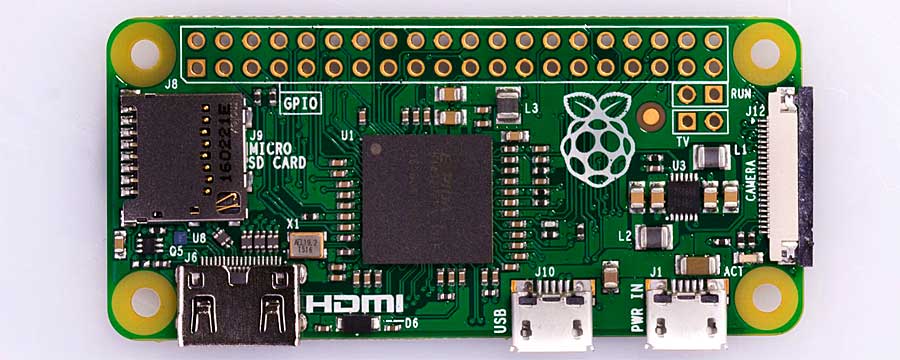Low-cost open source computing in healthcare simulation — INACSL Conference 2018, Sheraton Centre Hotel, Toronto, Canada

This is the resource page for the poster presentation at the 2018 INACSL Conference, entitled "Low-cost open source computing in healthcare simulation"
The device in the photo at the top of this page is the Raspberry Pi Zero W running Linux Raspbian Lite OS; open source hardware running an open source operating system. It embodies the basics of open source concepts; a low-price with flexibility and the backing of a large, world-wide user/developer/creator community. At just $10 U.S. this computer has built-in WiFi and can be configured as an access point which lets you operate your trainer or mannequin via a webpage. If you would like to configure your own Raspberry Pi Zero W as an access point, I've published detailed and easy-to-follow directions here.
I've included links to available resources on the internet and have given a short description of each link. If you have any questions send me an email (see my contact page).
Here are some resources from my poster presentation:
- Arduino. The Arduino microcontroller is a small, easy-to-use device which lets you interact with the world. It can read sensors attached to it (sensing touch, pressure, light, sound and more) and output to the world (run motors, light lights, make noises, operate displays and much more). It is programmed through a USB connection. There are a number of models from the tiny Arduino Micro to the larger Arduino Mega. Various accessory boards, called shields, mount on top of the Arduino. The shields simplify commonly used functions like running motors or wireless connectivity. Best of all, the Arduinos are low cost, many under $20.
- Raspberry Pi. The Raspberry Pi is a tiny, inexpensive computer running the Linux operating system. Originally developed as computer technology training platforms, the low-price, flexibility, and open source have made them platforms for innovation and research. The current top-of-the-line Raspberry Pi is priced at under $60 and includes built-in WiFi and Bluetooth. Raspberry Pi has General Purpose Input Output (GPIO) pins which can connect to accessory boards, usually called "hats." The hats can perform specialty functions such as motor control.
- Linux An open source operating system, based on UNIX, which now runs many computers on the Internet and is the basis for several other operating systems including Android. Linux comes in many distributions (distros) that go from lightweight to fully-outfitted professional grade.
- GitHub Github is a collaboration site for software. The website allows programmers to collaborate on software projects yet keep a record of changes that have been made to the software. Github can be used for other things as well; writing articles or anything that goes through multiple versions. It might be good for simulation cases. My page at GitHub has the Arduino C++ code for the simulated thermometer.
- Thingiverse. This website catalogs 3d printed designs, many of which are open source, downloadable, and printable. You can browse by categories. Many of the designs can be modified and customized. My page at Thingiverse features a case for a simulated thermometer (powered by an Arduino Micro).
- OpenStax Open source textbooks for high school seniors and university. The quality of these textbooks is first rate.
- PhysioNet: the research resource for complex physiologic signals. Software and data licensed under the GNU Public License. The amount of data on this website is staggering! For example, you can access the records of over 40,000 critical care patients (MIMIC). There is software to replicate the human cardiovascular system and software to generate ECG waveforms. Wow.
- Creative Commons Founded in 2001, Creative Commons writes licenses that can be used to license intellectual property, in general things that fall under copyright law.
- Healthcare Simulation and Intellectual Property. This is a resource guide I wrote to give a simple introduction to the basic types of intellectual property. I've also covered some topics which touch on intellectual property topics but are not considered intellectual property. Written from a Canadian law perspective.
- Open-source hardware for medical devices See article for full citation.
- Rhythm of Life Aid (ROLA): An Integrated Sensor System for Supporting Medical Staff During Cardiopulmonary Resuscitation (CPR) of Newborn Infants See article for full citation.
- eBSim: Development of a Low-Cost Obstetric Simulator See article for full citation.
- SOFA--an open source framework for medical simulation See article for full citation.
- Horos Open source medical viewer.
- ITK-SNAP Open source software used to segment organs in medical images. See how this, along with other software, is used to make a 3D Printed Bronchoscopy Simulator
- What is free software? A definition of free software from the GNU/Free Software Foundation
- Open Source Initiative (OSI) A definition of open source software from the Open Source Initiative.
- ChatScript an open source Chatbot. This has been used in an application to help students practice history-taking skills. See Developing a Conversational Virtual Standardized Patient to Enable Students to Practice History-Taking Skills (click on link for full citation).
- Shenzhen: The Silicon Valley of Hardware (Full Documentary) | Future Cities | WIRED. This documentary explores the maker movement in the city of Shenzhen, Guangdong province, China. Tour the bustling Huaqiangbei electronics market. See "Technology is a WOMAN'S game in CHINA!" for more about this topic.
- Penn and Teller - Cups and Balls Trick This might seem a bit odd as a resource for an open source article. Penn and Teller are unconventional magicians who, seemingly, break the rules (they tell you how they do the trick) yet still perform an entertaining magic trick. Their magic is open source magic.
- Hedy Lamarr and the Torpedo Maker culture
Copyright © by Barry M. Robinson, Toronto, Ontario, Canada | Privacy Policy
